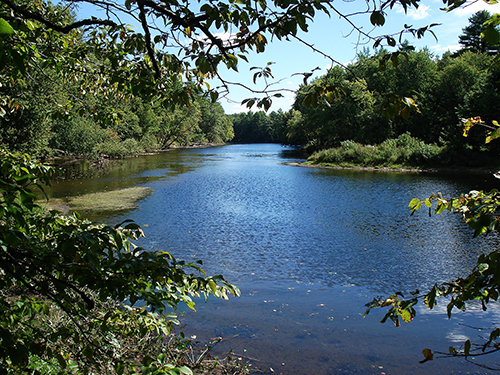Contoocook River

(Text from New Hampshire Dept. of Environmental Services)
The Contoocook River flows for 71 miles from Poole Pond in Rindge, New Hampshire, north to the state capitol, Concord, where it enters the Merrimack River. Encompassing a drainage basin of 766 square miles, the Contoocook has a total drop of over 700 feet which affords one of the premier whitewater boating stretches in New England.
At least 117 species of birds dependent upon the Contoocook and North Branch Rivers and their corridors have been tallied in recent years. One endangered species, the pied-billed grebe, was sighted and eight threatened species recorded. The threatened species include: the bald eagle, common loon, osprey, northern harrier, common nighthawk, eastern bluebird, purple martin, and great blue heron. The variety of plant life in the corridors is as diverse as its wildlife population.
The scenic views of the rivers are diverse and impressive, from the sights and sounds along the community trails in Hillsboro to the riverfront park in Henniker.
Much of the Contoocook River is enjoyed by boaters. The upper portion of the river provides a mix of quickwater and moderate rapids. Paddlers enjoy calm waters on the Contoocook near a former bridge crossing. Farther downstream, the Contoocook River flaunts one of the most popular whitewater runs in New England. The rapids between Hillsboro and West Henniker offer high quality, Class III-IV (expert) whitewater including the famous Class IV “Freight Train Rapids.” The lower part of the river between Contoocook Village and the Island in Penacook is largely flatwater and is used by a variety of motorboats, party boats, canoes and rowboats.
The Contoocook and North Branch Rivers provide both cold and warm water habitats for several species of recreational and sport fish. The Contoocook River is also a vital component of the anadromous fish restoration program for the Merrimack River watershed. It is viewed as an outstanding nursery area for young Atlantic salmon. The most significant, high quality habitat for these and other cold water fish is the section of rapids in the Hillsboro-West Henniker area. The slower moving sections of the river and impounded areas provide excellent warm water fish habitat.



